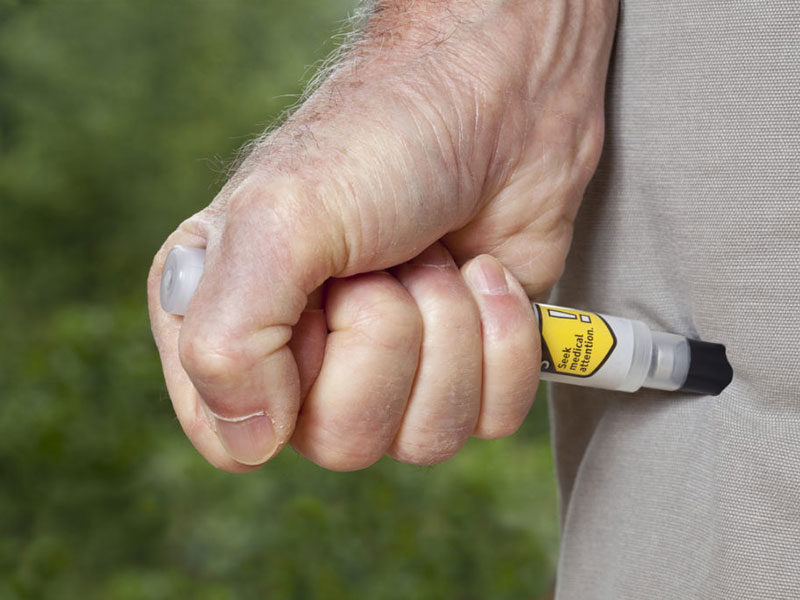Allergic reactions can be alarming.
Reactions to food and drugs can range from mild, with hives or a rash, vomiting and diarrhea to severe and life threatening respiratory distress. Allergic reactions are the result of a chain reaction, beginning in your immune system. Your immune system keeps you healthy by fighting off infections and other dangers to your health. When a food or drug is introduced, the immune system overreacts, identifies it as a danger, and triggers a response to try and protect your body.
The most severe form of immediate allergic reaction is anaphylaxis. Because the treatment for anaphylaxis is so effective, it accounts for only approximately 200 deaths per year. The treatment for anaphylaxis is Epinephrine and Benadryl.
Symptoms of anaphylaxis include:
- Hives
- Facial or throat swelling
- Wheezing
- Light-Headedness
- Vomiting & Diarrhea
- Shock
Food allergies affect more than 50 million Americans. Food allergy symptoms are more common in children and babies, but can appear at any point during a person’s life. It’s possible to develop an allergy to a food you have been eating for years. There are eight foods that are responsible for most food allergic reactions. They are milk, soy, wheat, eggs, tree nuts, peanuts, fish and shellfish. Many people who think they have food allergies in fact have food intolerance. While an allergic reaction triggers an immune system reaction that affects multiple organs in your body, food intolerance symptoms are less severe and only affect the digestive system. Celiac disease (gluten) and lactose intolerance are two examples of a food intolerance.
Allergic reactions to drugs affect up to 10% of all people worldwide. These allergic reactions affect approximately 20% of all hospital patients. Penicillin is a commonly used antibiotic and is the drug that causes the most reactions. An allergic reaction to Penicillin usually occurs within thirty minutes of administration. When starting a new medication, the most common allergic reaction results in itchy rashes, which can occur within days to weeks after exposure to the drug. Most allergic reactions will occur within two weeks, however rashes may develop up to six weeks after starting a medication. Most anaphylactic reactions occur within an hour of exposure to a medication, but rarely can happen several hours later.
If you believe you or someone else is having a serious adverse reaction to a drug or food, it’s important to contact a physician immediately. If the person has a history of anaphylactic reaction, they may need Epinephrine and or Benadryl and will have a prescription. Follow these steps to provide aid to a person having a severe allergic reaction.
- Ask if they have medicine and where it is, get the medication and hand it to them.
- Unless you are a nurse or doctor, you should have the patient administer the medication themself.
- Call 9-1-1 immediately after you give them their medication. A severe reaction still needs medical attention.
- Stay with the person. Comfort, calm, and reassure them until help arrives.
- If the patient loses consciousness, check for breathing, If they are not breathing, start CPR.
So what can you do? If you have a severe food or drug allergy, it’s important to take steps to be vigilant and prepared. After you have been diagnosed you can work with your doctor to develop an allergy and anaphylaxis emergency care plan. This plan might include:
- Strict avoidance of problem food or drugs.
- Wearing emergency medical identification (bracelet, jewelry) at all times. Let your coworkers and friends know about your allergies and how they can help if you need it.
- Carrying medication wherever you go.
- Administering medication at the first sign of a reaction.
- Getting emergency room follow up treatment for a severe reaction.

